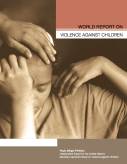





Violence against children
Violence is an important issue in the European societies. In 2006 UN has published the “World Report on Violence against Children”. Paulo Sergio Pinheiro, independent expert for the UN Secretary General’s Study on Violence against Children, stated “Another promising element of the study process has been the great interest of Governments all over the world to address the issue of violence against children.” Among others Council of Europe, the European Union were actively involved in the promotion of the study and played important roles in the organisation of consultations.
Violence against children can be found in all countries, cultures, religions and classes of societies. Violence against children is taking place in families, day care institutions, kindergartens, and schools, in the community. Only 2,4% of children are legally protected from corporal punishment at home (see also Non-violent Education in Europe) .Around 20% to 65% of school aged children reported having been lately bullied in school. One out of every ten schoolchildren faces violence at school – some of it so traumatic that suicide seems the only way out.
Among others violence against children is causing high financial costs, is influencing children’s development, physical and psychological health. In Germany, several studies show that approx. 18% of the children are affected by mental or behavioural disorders by the time when they start attending school (Ihle & Esser 2002; Lösel et al. 2004, Erhart et al. 2006, Coutant 2005). The large survey “BELLA” (Germany) based on data from 7600 children shows: “12% of the respondents with high socio-economic status (SES), 17% of those with middle SES and 21% of those with low SES had mental health problems. Migrants are more frequently affected than non-migrants” (Erhart et al. 2006, p. 1228).
Violent behaviour mostly has its roots in the early years of life and it is long term and stable from the age of five to six years (e.g. Fröhlich-Gildhoff 2006). There seems to be a strong link between youth violence and violence in their upbringing. Additionally, youth with experience of violence in their upbringing are more frequently victims of violence outside the home.
Eurobarometer studies give evidence that the acceptance of violence is growing, particularly in the younger generations (The Daphne Experience 1997-2003).